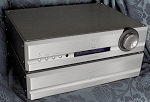Introduction
Pass Labs is highly renown for their audio components, some of which operate in pure Class A. Besides preamplifiers and power amplifiers, they also produce phono preamplifiers (also called phono stages), having begun with the Aleph Ono in 1997. The XP-25 is their latest version, which was designed by Pass Labs engineer Wayne Colburn.
Specifications
- Design: Solid State Phono Preamplifier (Phono Stage)
- Gain: Selectable 53 dB, 66 dB, 76 dB (Balanced XLR); 47 dB, 60 dB, 70 dB (Single-Ended RCA)
- MFR: 20 Hz – 20 kHz, ± 0.1 dB
- THD+N: 0.005% MC Cartridge, 0.002% MM Cartridge
- Inputs: Two Sets RCA
- Ouputs: RCA and XLR
- Input Impedance: 100 pF – 750 pF (Selectable); 100 Ohms – 47 kOhms (Selectable)
- Output Impedance: 100 Ohms
- Dimensions: 4″ H x 17″ W x 12″ D (Each Chassis)
- Weight: 45 Pounds
- MSRP: $10,600 with Power Supply USA; $7,600 if you already have the power supply
- Pass Labs
The Design
The XP-25 is a dual-chassis design, with the power supply in a different chassis than the gain stages. The two chassis are connected together with a DB-25 cable on the rear panels. The power supply has two DB-25 ports, so you can power another Pass Labs product that accepts this type of power connection. Also on the rear panel are two pairs of RCA single-ended (unbalanced) inputs, along with a pair of RCA single-ended and XLR balanced outputs. Although the power receptable is grounded, there is a separate grounding terminal that can be connected to a ground screw on your preamplifier, or to the metal base of the turntable. This can make a big difference in the amount of hum in the signal, since one is dealing with output voltages as low as 0.3mV from the phono cartridge.
The front panel has rotary controls to select the Resistive Loading (100 Ohms – 47 kOhms), Capacitive Loading (100 pF – 750 pF), and the Gain (53 dB, 66 dB, 76 dB). On the right are buttons to select Input 1 or 2 (you would need these if you are one of those vinly aficionados who has a turntable with two tonearms), a High-Pass filter (removes frequencies below 20 Hz), and Mute.
The Resistive Loading and Capacitive Loading controls are used to provide the best possible impedance interface between the cartridge and the input stage of the XP-25. Again, this is very important because of the low voltage output from the cartridge. For MM (Moving Magnet) and Moving Iron cartridges, you adjust both the Resistive and Capacitive Loading. For MC (Moving Coil) cartridges, it is mainly the Resistive Loading that is used. However, it’s important to experiment with different loading combinations to see (hear) what sounds best. The instruction manual suggests starting with a 100 Ohm resistive load. I use a Sumiko Blackbird MC cartridge, so I set the capacitive load to 100 pF (the lowest setting).
Depending on the output of the cartridge, you select the gain setting. If you have a low output MC cartridge, you would probably want to have the 76 dB gain. The Sumiko Blackbird outputs 2.5 mV (which is high for an MC cartridge), so I used the 66 dB setting and the RCA single-ended output (which actually results in a 60 dB gain, since the front panel markings are for the XLR outputs). I tried different settings on both the Resistive Loading and Capacitive Loading, as well as the Gain, and these were the settings that I ended up with: (100 Ohms, 100 pF, 60 Gain). It allowed me to get the kind of loudness I want from my speakers with the preamplifier near the middle of its volume control range.
There are two gain stages in the XP-25. Compared to earlier models, the first gain stage has lower noise transistors, controlled open-loop gain, and a small amount of local negative feedback. Low noise thin-film resistors are used throughout. Resistor leads and end-capacitors have been eliminated. At the point the signal reaches the input stage, it has been regulated and filtered seven times, which allows a specification of being able to handle a signal as low as 0.1 mV (there are several cartridges out there that have 0.2-0.3 mV output). The input stage is basically the same for MM or MC cartridges. You control how the signal is handled by the myriad choices of resistive and capacitive loading on the front panel.
In Use
I tested the XP-25 with a VPI HR-X turntable, Sumiko Blackbird MC cartridge, Lamm LL1 preamplifier, and Classé CA-M600 monoblock power amplifiers. Cables were Marc Audio. I used the RCA single-ended outputs (the XP-25 is not a fully balanced circuit).
Having just received a nice package of classic jazz LP re-issues (cut at 45 RPM), I retreated to my lab with my hot chocolate from Starbucks, let all the tubes in the LL1 warm up for a while, and put on the first LP.
Saxophonist Sonny Rollins is still very active, and in 2010, was one of ten recipients of the 2010 National Medal of Arts, presented by President Barack Obama in Washington, D.C. Rollins was born in 1930 and started out as a pianist, but switched to saxophone. He has recorded with most of the great classical jazz musicians of the 20th century, including Miles Davis, Thelonious Monk, Red Garland, Paul Chambers, and Phillie Joe Jones. His life, like so many musicians of that era, was not all roses. He spent a term in Rikers Island after being convicted of armed robbery in 1950.
In this album, Rollins is on tenor sax, Walter Booker on bass, Ray Bryant on piano, and Mickey Roker on drums.
This, and most of the other classic jazz albums that I purchase, are cut at 45 RPM which means you end up with two LPs instead of one.
On track 2, side 3, called “Blue Room”, I was very impressed at how crisp and intricate the brush work (used on the snare drum) came through. On side 4, the piano solo was wonderfully clear (the performance wasn’t so bad, either), and although Sonny’s melodies were fast and furious, the sticking on the cymbals remained distinct.
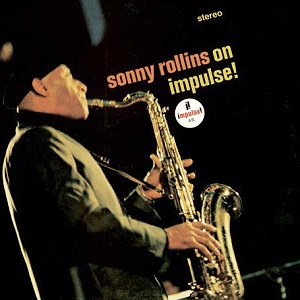
Here’s another Sonny, in this case, Sonny Clark, who was a jazz pianist (he died of a heart attack at the age of 32), who recorded with Dinah Washington, Charles Mingus, and Billie Holiday. Cool Struttin’ was released in 1958 in mono, but re-issued in stereo later on (instead of mixing all the tracks down to mono, the re-issues split the tracks). It includes Jackie McLean on alto sax, Art Farmer on trumpet, Paul Chambers on bass, and Phillie Joe Jones on drums. It’s a terrific album, and the XP-25 delivered all the details, including the ride cymbal overtones. I did notice that McLean was about a half note sharp on the first track. I don’t have absolute pitch, but I can certainly hear when a musician is not quite in tune.
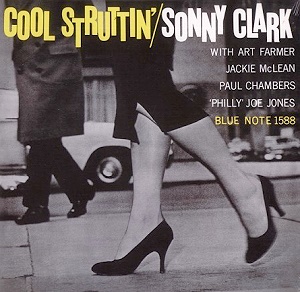
This album, Night Dreamer, released in 1964, was Wayne Shorter’s first release on the Blue Note label (one of the best jazz labels in the world). Shorter is an alto saxophonist, and is considered among the very best jazz composers. He was born in 1933 and has received numerous Grammy Awards for his work. His career has spanned classical jazz, up through modern rock. He played with Miles Davis, and also Steely Dan, Joni Mitchell, and Carlos Santana. He formed the jazz fusion group, Weather Report, in 1970.
What I really noticed on this album was the ability to distinguish the sax and trumpet (Lee Morgan on this album) when they played the melody together in exactly the same register. This is a good indicator of low intermodulation distortion that would otherwise turn the midrange to mush. On Track 1, Side 2, “Oriental Folk Song”, both Shorter and Morgan were smokin’ with the melody, while Elvin Jones (another terrific jazz drummer) was shredding. All three were located with great precision on the soundstage. The amount of sibilance was just right for the high notes.
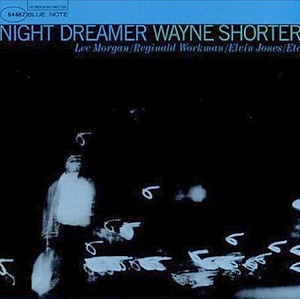
Well, I talked about Sonny Rollins, who started out as a pianist and switched to saxophone, and here is a musician, Horace Silver, who did just the opposite, becoming one of the great jazz pianists. He has recorded with many great names, like Miles Davis and Stan Getz. Blowin’ the Blues Away was released in 1959, and is one of Blue Note’s all time best albums. I was particularly impressed with the trumpet solos by Blue Mitchell. It truly sounded as if he were standing right in front of me.

My overall impression of the XP-25 is that it has low noise and a slightly warm character, a bit tube-like, which is something I relish.
The frequency response was flat out to 1 kHz, then increased 0.3 dB from 1 kHz to 15 kHz before coming back down again. The response is a reflection of the RIAA de-emphasis in the phono preamp, and is probably part of the warmth that I experienced in the sound. There are many studio microphones that have a rise in the upper midrange, and are prized for this characteristic because it increases the sense of “presence”. I moved the connecting cables into various locations to get the lowest noise, and the result was 0.008% THD+N. There was only a 2nd harmonic present, and it was 100 dBV below the 1 kHz fundamental. This is superb performance. (The lack of 3rd order harmonics may also contribute to the tube-like sound I heard.)
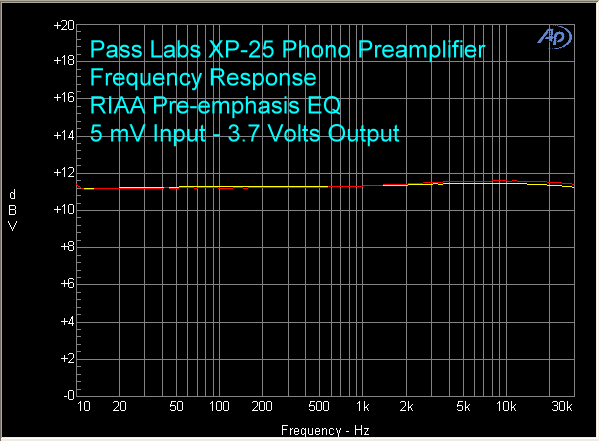
Conclusions
The Pass Labs XP-25 is a top notch phono preamplifier, desirable not only for its low noise and sound quality, but for its flexibility in maximizing the interface between the cartridge and the phono preamplifier. Connoisseurs welcome. Leave your shoes at the front door. Paradise awaits you inside.


